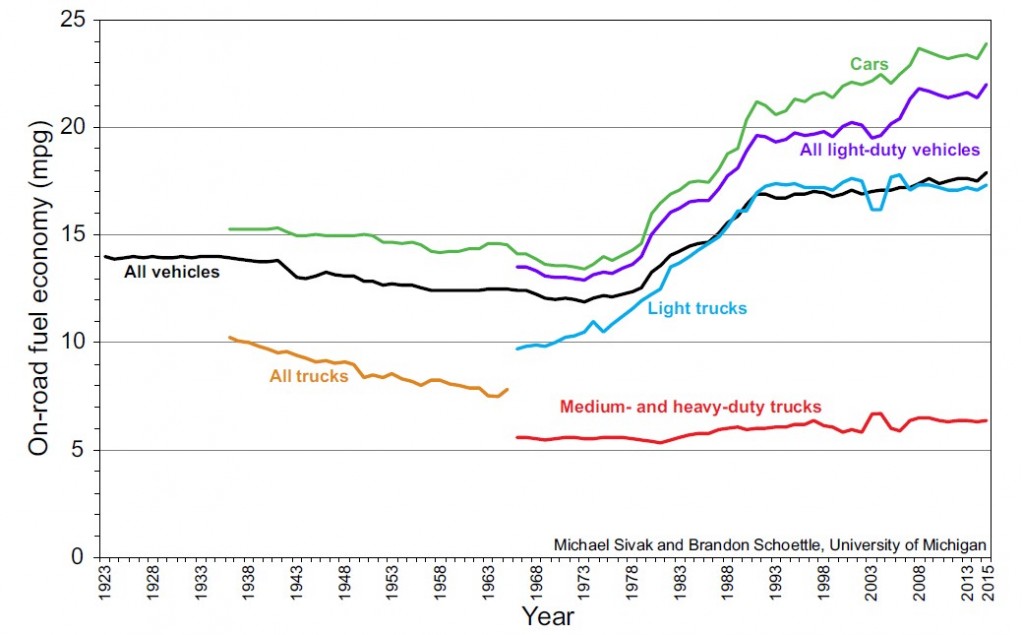It's been hanging out there in limbo for more than six months: the answer to the question of what happens to gas-mileage rules under Trump.
Given the daily political turmoil emanating from Washington, D.C., the fate of corporate average fuel economy rules may have gotten lost in the noise.
But for automakers and consumers, the fate of current CAFE regulations for vehicles in model years 2022 to 2025 is both near and financially important.
DON'T MISS: Trump NHTSA might reduce fuel-economy rules for two-thirds of U.S. vehicles
Now, according to an article published Tuesday by Bloomberg, the NHTSA is ready to release its proposals for revising CAFE levels on March 30.
A year into the Trump administration, no permanent NHTSA administrator has been appointed, so the date was released by Acting Administrator Heidi King.
The administration initiated a review of the CAFE standards for 2022 through 2025 that were proposed in 2012 under the Obama Administration, subject to a midterm review.

On-Road Fuel Economy of Vehicles in the United States: 1923-2015 (Sivak and Schoettle)
Those proposals, King said, will "stimulate dialogue, robust listening to the data and the stakeholders that should inform a decision before we go to a final rule stage."
Behind the scenes, however, a report on Tuesday from Reuters suggests the horsetrading and climate warfare may be intense at present.
The auto industry desperately wants a single national standard, but California has threatened to set its own carbon-emission standards for vehicles sold within the state if national standards are substantially weakened.
CHECK OUT: Automaker push to delay, modify, or kill CAFE is nothing new
Carmakers fear that if the 2022-2025 standards are rolled back to 2021 levels—as the NHTSA has said it is evaluating—the maximum fleet carbon emissions in California and the 12 states that adopted its emission rules will get lower and lower against those in force in the rest of the country.
That could require automakers to limit their sales in the state, incentivize lower-emitting vehicles, penalize higher-emitting ones, and otherwise greatly interfere with the largely market-driven process of consumers choosing among the vehicles available nationwide.
Officials from the powerful California Air Resources Board are meeting in Washington this month with EPA officials on that agency's carbon-emission standards.

Chrome exhaust pipe
The EPA adopted standards for 2022 through 2025 in the waning days of the Obama Administration, but EPA administrator and climate-science denier Scott Pruitt has made rolling those back one of his top-priority agenda items.
California has a longstanding legal right to set its own emission standards, as it was doing even before the EPA existed, and last year Pruitt said he did not intend to attack the "California waiver" that allows it to do so for carbon emission from vehicles.
Pruitt told Reuters, "California doesn’t have the authority to set the standards for the rest of the country,” but said there was "no reason to speculate" on whether he planned to withdraw the waiver.
Under the general guise of "reducing regulation," the Trump administration has appointed numerous high-level administrators who deny the accepted science of climate change and whose regulatory actions appear to favor maximum use of carbon-based fuels.
It has eliminated or modified dozens of regulations on fossil-fuel exploration, extraction, transport, and use, and is working to eradicate the Clean Power Plan to reduce carbon-dioxide emission by electric utilities.
It also announced the U.S. would withdraw from the Paris Climate Agreement it joined in November 2016, though that cannot happen until a few days after the 2020 presidential election.
_______________________________________













